Click Here if you listened. We’re trying to gauge interest so only one question is required; however, there is a spot for feedback!
Read along below!
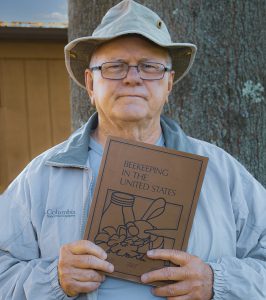 Beekeeping in the United States
Beekeeping in the United States
A review of a classic beekeeping book that is available to you – FOR FREE
By: James E. Tew
Why this book?
Why trot this book out of retirement? Each December, Bee Culture typically features various current honey bee keepers and related scientific and educational staff. I usually choose to tell the Bee Culture readers about beekeeping figures who are no longer with us or are retired from working in our apicultural field, but who at one time, were prominent figures in our industry.
I don’t know why I began doing this, but it’s probably because I am now, myself, a senior citizen beekeeper. I can look backward as easily as I can look forward. During my career, I have had the honor of knowing and working with many, many beekeeping authorities who are no longer with us. About once a year, I say to you readers that “We are standing on their beekeeping shoulders,” and most of you do not even know who “they” were. The authors of the chapters in this book were some of those supporting bee people.
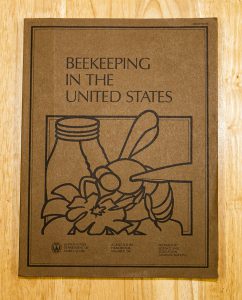
Figure 1. Beekeeping in the United States, Agricultural Handbook Number 335
So, why this book and not some other? It is a quiet classic. Printed copies are still common, but importantly, it is digitized and is available just using simple archival searches. I have provided a URL in the next section. I don’t know whose idea it was to put this text together, but it was an idea for the time. It is a Who’s Who of Agricultural Research Service Researchers of that period. These authors were noted researchers, teachers and frequent speakers at meetings and conventions. They were the “in-crowd” of beekeeping research and information distribution.
This readable book was written before tracheal mites, varroa mites, Africanized honey bees, small hive beetles, neonic insecticides and Colony Collapse Disorder. At best, there were only simple computers and telephones available.
The book authoritatively captures U.S. Beekeeping just before our industry began the “Big Transition.” After the time of this book, everything changed – including the ARS’s research direction. All things beekeeping had to change to keep up with the unfolding honey bee management world.
Abstract of Beekeeping in the United States
Martin, E. C., E. Oertel, N.P. Nye, and others. 1980. Beekeeping in the United States. U.S. Department of Agriculture, Agriculture Handbook No. 335 (revised) 193 p., illustrated. https://archive.org/details/Beekeeping.in.the.United.StatesD7
(Circa 1980) In the United States about 200,000 people keep almost five million colonies of honey bees and produce 200 million to 250 million pounds of honey annually. Beekeepers derive income from the sale of honey, renting of colonies for crop pollination, production and sale of queen bees and packaged bees, and to a minor extent, from the sale of beeswax, pollen, bee venom, propolis and royal jelly.
This handbook provides readers with a better understanding of beekeeping in the United States. Some of the topics discussed are the life history of the honey bee; bee behavior; breeding and genetics of the honey bee; queens, packaged bees and nuclei; managing colonies for high honey yield and crop pollination; diseases and pests of honey bees; and effects of pesticides on honey bee mortality. This handbook also lists beekeeping organizations and some statistics on bees and honey.
Some modern-day beekeeping numbers
Today, in the United States there are anywhere from 115,000 to 125,000 beekeepers. According to the USDA reports, 2.71 million honey-producing colonies in 2020 generated 148 million pounds of raw honey. According to the National Honey Board, per capita consumption of honey in the United States is approximately 1.51 pounds per year (https://www.agmrc.org/commodities-products/livestock/bees-profile#:~:text=In%20the%20United%20States%20there,million%20pounds%20of%20raw%20honey.).
A typical Jim Tew disclaimer
Bee Culture readers, my comments here are not a historical review of the USDA Agricultural Research Service’s honey bee program. Neither are my comments here intended to rank or highlight one individual above (or below) another. There are too many respected people who contributed to this book for me to research and review each one. My comments here are personal and are only selected memories of my interactions with some of these notable individuals. As it were, “This is my story.”
E.C. Martin
Dr. E.C. (Bert) Martin spent most of his career in Michigan at Michigan State University. Later, he served as Staff Scientist, National Program Staff, Science and Education Administration. He was a researcher, copious writer and teacher. At the time of the publication of “Beekeeping in the United States,” (1980) he had already retired. Yet, his contributions appear throughout this publication that I am reviewing. My limited memory of him was as a quiet, pensive man. Yet, he had a profound effect on my personal career.
In 1977, as a young graduate student at the University of Maryland, while being mentored by Dr. Dewey Caron, Dr. Martin notified me that a position in a Commercial Beekeeping training program was about to open at The Ohio State University in Wooster, Ohio. I immediately contacted OSU and began the process of applying.
Upon being interviewed, the OSU review committee wanted to know how I learned of the job opening before it had been posted. I confessed the “heads up” that Dr. Martin sent me. I was awarded the job and went on to work for the Department of Entomology, at Ohio State for about the next thirty-four years. To this day, I feel like my early application submission impressed the search committee as much as my academic credentials. Thank you, Dr. Martin.
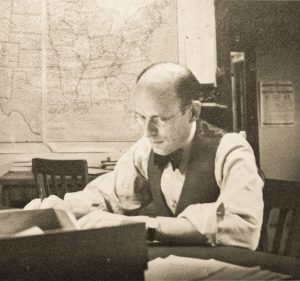
Figure 2. Dr. Everett Oertel, circa 1942 Baton Rouge, LA
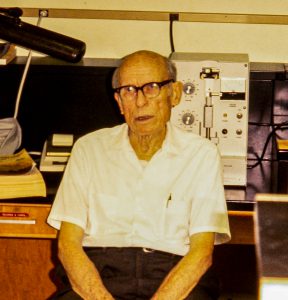
Figure 3. Dr. Everett Oertel as I knew him in the 1980s.
Everett Oertel
Born in 1897, Dr. Oertel was older than my beloved grandfather. At the Bee Lab in Baton Rouge, I only knew him as a doddering old man, who came to the lab every day and reflected on nearly anything. He spent nearly all his career at the Baton Rouge Bee Lab.
During World War I, he served with the United States 32nd Division in the American Expeditionary Forces in France. He was awarded the French Croix de Guerre with silver star, Presidential Citation and the Purple Heart.
I didn’t know any of this. To me, he seemed to have become the national de facto beekeeping historian – probably due to his age – but I know that in his earlier life, he was a productive honey bee researcher particularly in honey bee metamorphosis.
Even in old age, he was alert and involved in conversational beekeeping. He was committed to all things honey bees. In retirement, he played a significant role in compiling this text. He has been gone since 1988, yet here I sit, reading his contributions to beekeeping in this book. Thank you Dr. Oertel.
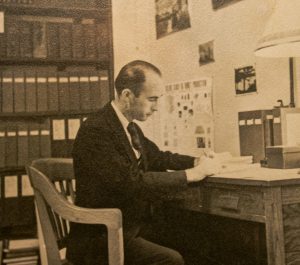
Figure 4. Dr. S.E. McGregor, as a young man, circa mid-1940s
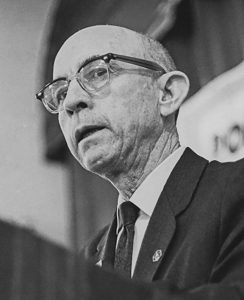
Figure 5. Dr. McGregor as I knew him.
S.E. McGregor
In my defense, I met Dr. McGregor on multiple occasions and sat in on several of his presentations, but apparently, I never snapped a photo. I offer the included photos that I found on the internet.
While I do not know details, as a young man in the mid-1970s, I was aware that Dr. McGregor was working on a tome that would list major crop plants and give specifics about each plant, including pollination requirements. It took him years to compile the necessary information and diagrams.
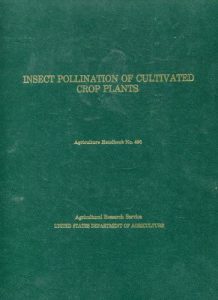
Figure 6. A rare hardcopy of Dr. McGregor’s pollination book
At long last and after many delays, the seminal text was released in 1976. It did not disappoint. Insect Pollination of Cultivated Crop Plants, as a basic information source, is still alive and fundamentally useful today. The updated version can be found online at the citation listed elsewhere in this article (McGregor, S.E. Insect Pollination of Cultivated Crop Plants. https://www.ars.usda.gov/arsuserfiles/20220500/onlinepollinationhandbook.pdf). Additionally, the book is readily available in printed format at bee supply outlets. So, how are these two books related? An abbreviated version of this book was presented as a chapter entitled Pollination of Crops in Beekeeping in the United States.
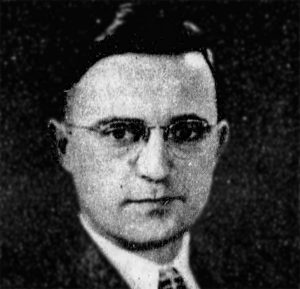
Figure 7. Jonathan W. White Jr., circe 1958
J.W. White, Jr.
Jonathan W. White, Jr. has the distinction of being the last honey chemist for the U.S. beekeeping industry. He was a prolific researcher and chemist. Dr. White was born on September 29, 1916 and passed away on September 2, 2001. A native of State College, Pennsylvania, and a Pennsylvania State University alumnus, he is recognized for his outstanding contributions to apiculture and honey research during his sixty-year career3.
Go to the web, and key in his name. There will be abundant listings presented on all aspects of honey chemistry and honey handling. In virtual format, his reputation lives on, but today, few latter-day beekeepers know of his contributions.
His co-authored chapter with Landis W. Doner in Beekeeping in the United States, entitled Honey Composition and Properties continues to be foundational information concerning honey chemistry, quality and food value.
H. Shimanuki
What can I say? Dr. Hachiro Shimanuki was a walking, living library of beekeeping information. He knew the general beekeeping literature better than anyone I have ever known. He sat on my review committee at the University of Maryland and was a part of my professional life for many years. Without his permission, I would like to write that he was a significant mentor in my academic life. I have not seen him in many years, but I appreciate all he did for the U.S. beekeeping industry (and for me).
In the book I am reviewing, his chapter was on Diseases and Pests of the Honey Bee. Even in its current outdated format, his information is relevant today. For many years, he was the Lab Leader at the USDA ARS Honey Bee Laboratory at Beltsville, Maryland. If he was not directly involved in a particular study, he was frequently a co-author. A list of his USDA published works is posted at: https://www.researchgate.net/scientific-contributions/H-Shimanuki-45223384
For decades, Dr. Shimanuki, and the lab for which he was leader, was the “go-to” source for any pathological and pest-related bee questions. He attended hundreds of meetings across the world. He was there for the tracheal mite establishment, the varroa invasion and the migration of Africanized honey bees. He was an obvious choice for authoring this disease and pest chapter in the USDA’s general beekeeping book.

Figure 8. Drs. Tom Rinderer and “Shim” Shimanuki (mid-1990s) at the Beltsville Bee Lab in Beltsville, Maryland
Thomas E. Rinderer
Tom Rinderer was the lab leader at the Bee Breeding and Bee Stock Research Center at Baton Rouge. For clarity, this was the same facility where Dr. Oertel, whom I reviewed already, also worked. Dr. John Harbo and so many others also performed research at that facility. Advances in honey bee queen instrumental insemination and breeding were common study topics.
Dr. Rinderer, from this lab, was pivotal in Africanized honey bee (AHB) studies as the U.S. beekeeping industry prepared for the arrival of the AHB. Before my time at Ohio State, Dr. Rinderer was a student of Dr. Walter Rothenbuhler at The Ohio State University where he began developing his honey bee genetic skills.
The chapter that Dr. Rinderer and Dr. Harbo submitted in Beekeeping in the United States is still educational and fundamental today. For those just beginning in beekeeping genetic studies, this simple, readable format, that describes complex breeding strategies, would be a perfect place to start. For example, Russian bee stocks are used in the U.S. industry today due, in part, to Dr. Rinderer’s efforts to select and introduce the stock into this country.
I hate this…
I hate doing this, but I must stop and I must stop well before many other contributors to our knowledge wealth are acknowledged. They’re in the book. Have a look. Their contributions were as significant as those whom I have selected to discuss.
Why this book?
I end where I started. Why review this old book? Because it is a time capsule of the “pre-varroa” way of U.S. beekeeping. Each chapter was written by an authority of the day. It was comprehensive having unusual chapters on topics like Moving Bee Hives or Showing Honey at Fairs. It has lists of nectar and pollen producing plants. It’s a good all-around text.
After 1980, it was never updated. I suppose too many things had changed. The internet was growing. Other organizations were forming. Bee life moved on, but this book, still available to you, remains the same, locked in time. It is not a “how to” book and oddly, it has no index, but it presented some of the best information of the day by some of the best authorities of the time. I like this forty-two-year-old book. Thank you for letting me remember these people and their contributions.
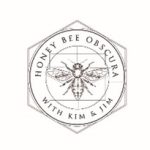
Dr. James E. Tew
Emeritus Faculty, Entomology
The Ohio State University
tewbee2@gmail.com
Co-Host, Honey Bee
Obscura Podcast
www.honeybeeobscura.com






